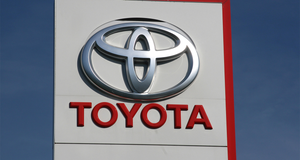The Recycling Partnership Showcases Organization's Efforts in 2022 Impact Report
Waste is a monstrously large issue. It is such a large problem, no one person, company, organization, or city is capable of solving it alone. This is where The Recycling Partnership, or “The Partnership”, comes in.
The Recycling Partnership was established with one goal in mind - creating a truly circular economy across the globe to bring an end to overflowing landfills.
In its 2022 Impact Report, the organization breaks down all of the individual successes they’ve had a hand in influencing to date. Looking into each aforementioned facet of the waste reduction issue, the report proudly touts some amazing steps forward towards their goals.
“System change requires collaboration–solving with communities, MFRs, materials and packaging manufacturers, brands and retailers, and people,” writes CEO Keefe Harrison.
Diving first into their work towards supporting communities, The Recycling Partnership examines a few areas where their work has pushed different states and cities towards their own recycling-oriented goals. The organization cites its work in Michigan, Orlando and Baltimore in its efforts to achieve higher recycling rates.
Michigan released a statewide goal of increasing recycling rates in the state from 14 percent in 2019 to 45 percent by 2030. In order to help them in making this objective a reality, The Recycling Partnership worked with local materials recovery facilities (MRFs), haulers, solid waste management authorities and environmental non-profits to decrease recycling contamination and supply resources.
Utilizing the strategy of collaboration, The Recycling Partnership was able to leverage its Feet on the Street program to supply 400,000 recycling bins across the state and bring recycling contamination levels down. This, in turn, will allow recycling rates to increase as fewer materials are rejected.
“In the first year of this collaboration, the recycling quality improvement program resulted in a 35 percent average reduction in contamination for curbside collection programs, a 26 percent average contamination reduction for drop-off programs, and a 10% increase in participation across most involved communities," the Impact Report states.
The report also explores another target area of The Recycling Partnership - MRFs.
Up to 25 percent of aluminum beverage cans are missorted at a typical MRF, according to research done by the Can Manufacturers Institute (CMI). The Recycling Partnership has pinpointed this gap as a means of furthering the industry towards its own goals of high recycling rates.
To provide what they can to this initiative, “The Partnership launched an Aluminum Beverage Can Capture MRF Grant Program to invest in eddy-current separators, robotic sorters, other equipment, and process improvement to capture more cans during the sortation process” asserts the report,.
This grant program has since endowed five grants of considerable size to companies that reach the criteria, allowing them to bring down the amount of missorted cans, recycle more material and progress towards circularity.
A large facet of The Recycling Partnership's work with correcting human behavior to empower people to recycle, and not just that, but recycle correctly.
To achieve this, the organization launched the Center for Sustainable Behavior & Impact, where the main goal is to provide as much education on the topic of recycling as possible while paying a lot of attention to its accessibility. With hopes of this educational access increasing consumer recycling rates, it is impossible to overlook the general access to proper recycling programs.
Currently 40 percent of all Americans lack equitable access to recycling, and the Center aims to drive "measurable change by leveraging our National Recycling Database, including targeted pilots of the newly launched chatbot, community partnerships, proven recycling education, and established track record of improving local recycling programs."
Looking to measure impact, the organization has laid out several goals including the following; “recover and collect more than 1 billion pounds of new recyclables each year, transform thousands of packages to recyclability, and
reduce tens of millions of pounds of packaging through improved designs.”
While they are excited about the leaps made thus far, they are not satisfied just yet. The Recycling Partnership has plans to continue pursuing efforts in all of their target categories and further employing their strategy of cooperation to accomplish widescale recycling change.
About the Author(s)
You May Also Like




